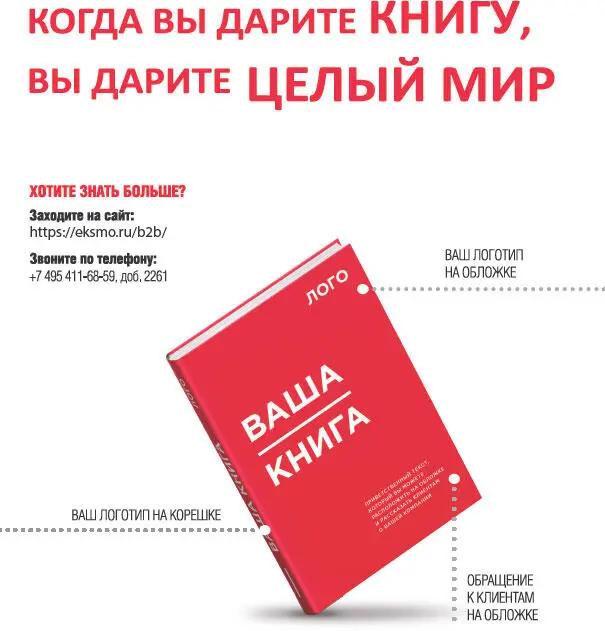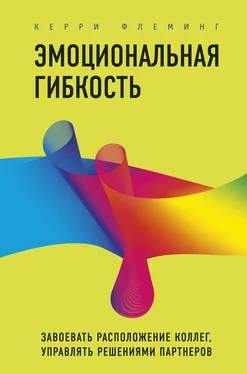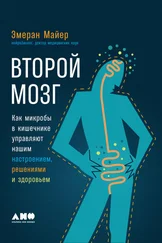Davis, D.M. and Hayes, J.A. (2012) «What are the benefits of mindfulness?» American Psychological Association Journal, 43(7) (Июль/Aвгуст).
Day, A. and Lubitsh, G. (2012) «Mutual trust is essential for successful change: lessons from implementing NHS reforms», 360° The Ashridge Journal, осень: 13–21.
Dekeyser, M., Raes, F., Leijssen, M., Leyson, S. and Dewulf, D. (2008) «Mindfulness skills and interpersonal behavior», Personality and Individual Differences, 44: 1235–45.
Dent, F.E. and Brent, M. (2010) «The Leader’s Guide to Influence: How to Use Soft Skills to Get Hard Results», Pearson: London. Fisher, C.D. (1997) «Moods and Emotions While Working – Missing Pieces of Job Satisfaction», Bond University [Queensland] School of Business Discussion Papers (№ 64).
Fleming, K. (2012) «Strategic leadership of architectural firms, the role of emotion management and innovation», докторская диссертация, Dublin City University, Ireland (неопубликована).
Grossman, P., Niemann, L., Schmidt, S. and Walach, H. (2004) «Mindfulness-based stress reduction and health benefits: a meta-analysis», Journal of Psychosomatic
Hare, R. and Babiak, P. (2006) «Snakes in Suits: When Psychopaths Go to Work», Harper Business: New York.
Harris, T. (2004) «I’m OK, You’re OK», Harper Collins: New York.
Hatfield, E., Cacioppo, J.T. and Rapson, R.L. (1994) «Emotional Contagion», Cambridge University Press: New York. Сайт: http://www.helpguide.org, http://www.healthysleep.med.harvard.edu
Helliwell, J.F., Layard, R. and Sachs, J. (2015) «The World Happiness Report», United Nations.
Hemphill, J.K. and Coons, A.E. (1957) «Development of the leader behaviour description questionnaire», в R.M. Stodgill and A.E. Coons, «Leader Behaviour: Its Description and Measurement», Columbus: Bureau of Business Research, Ohio State University.
Hoffman, S.G., Sawyer, A.T., Witt, A.A. and Oh, D. (2010) «The effect of mindfulness-based therapy on anxiety and depression: a meta-analytic review», Journal of Consulting and Clinical Psychology, 78: 169–83.
House, R.J., Hanges, P.J., Javidan, M., Doffman, P.W., Gupta, V. and Associates (2004) «Leadership, Culture and Organisations: The Globe Study of 62 Societies», Sage: Thousand Oaks, CA.
Izard, C.E. (2009) «Emotion theory and research: highlights, unanswered questions, and emerging issues», Annual Review of Psychology, Issue 1: 1–25.
Jha, A.P., Stanley, E.A., Kiyonaga, A., Wong, L. and Gelfand, L. (2010) «Examining the protective effects of mindfulness training on working memory capacity and affective experience», Emotion, 10: 54–64.
Kotter, J.P. (1996) «Leading Change», Harvard Business School Press.
Kotter, J.P. (2001) «What leaders really do», Harvard Business Review, декабрь.
Kübler-Ross, E. (1969) «On Death and Dying», Scribner: New York.
Levitt, T. (1969) «Exploit the business life cycle», Harvard Business Review, ноябрь.
Luft, J. and Ingham, H. (1955). «The Johari Window, a graphic model of interpersonal awareness», Proceedings of the Western Training Laboratory in Group Development (University of California, Los Angeles).
Luthans, F. and Avolio, B.J. (2003) «Authentic leadership: a positive developmental approach», в K.S. Cameron, J.E. Dutton and R.E. Quinn, «Positive Organisational Scholarship: Foundations of a New Discipline». Berrett Koehler: San Francisco, 241–58.
Lutz, A., Slagter, H.A., Rawlings, N.B., Francis, A.D., Greischar, L.L. and Davidson, R.J. (2009) «Mental training enhances attentional stability: neural and behavioral evidence», The Journal of Neuroscience, 29: 13418–27.
Mayer, J. and Salovey, P. (2002) «The Mayer Salovey and Caruso Emotional Intelligence Test, Version 2.0», Multi Health Systems: Toronto, Ontario, Canada.
Moore, A. and Malinowski, P. (2009) «Meditation, mindfulness and cognitive flexibility», Consciousness and Cognition, 18: 176–86.
NESTA (2009) «Measuring sectoral innovation capability in nine areas of the UK economy», Report for NESTA Innovation index project by S. Roper, C. Hales, J.R. Bryson and J. Love.
Ortner, C.N.M., Kilner, S.J. and Zelazo, P.D. (2007) «Mindfulness, meditation and reduced emotional interference on a cognitive task», Motivation and Emotion, 31: 271–83.
Ostafin, B.D., Chawla, N., Bowen, S., Dillworth, T.M., Witkiewitz, K. and Marlatt, G.A. (2006) «Intensive mindfulness training and the reduction of psychological distress: a preliminary study», Cognitive and Behavioral Practice, 13: 191–7.
Plutchik, R. (1994) «The Psychology and Biology of Emotion», New York: Harper Collins.
Shaver, P.R., Schwartz, J.C. and Wu, S. (1992) «Cross cultural similarities and differences in emotion and its representation: a prototype approach», Review of Personality and Social Psychology, 13, ed. M.S. Clark, Sage: Beverly Hills, CA, 175–212.
Russell, J.A. (1980) «A circumplex model of affect», Journal of Personality and Social Psychology, 39: 1161–78. (An alternative circular model but with different labelled dimensions was proposed by D. Watson and A. Tellegen), «Towards a consensual structure of mood», Psychological Bulletin, 98 (1985), 219–35.)
Shipton, H., West, M.A., Dawson, J., Birdi, K. and Patterson, M. (2006) «HRM as predictor of innovation», Human Resource Management Journal, 16(1).
Siegel, D.J. (2007) «Mindfulness training and neural integration: differentiation of distinct streams of awareness and the cultivation of well-being», Social Cognitive and Affective Neuroscience, 2: 259–63.
«Strength Deployment Inventory (SDI), self-assessment tool». Personal Strengths UK Ltd.
Tether, B.S. (2005) «So services innovate (differently)? Insights from the European innobarometer survey», Industry and Innovation, 12(2): 153–84.
Van Velsor, E. and Brittain, J.L. (1995) «Why executives derail: perspectives across time and cultures», The Academy of Management Executive, 9(4) (ноябрь), 62–72.
Wachs, K. and Cordova, J.V. (2007) «Mindful relating: exploring mindfulness and emotion repertoires in intimate relationships», Journal of Marital and Family Therapy, 33: 464–81.
Waller, L. and Reitz, M. (2015) «The neuroscience of management development», P. Hind (ред.), Management Development that Works, Libri Publishing: Faringdon.
West, M.A. (2002) «Sparkling fountains or stagnant ponds: an integrative model of creativity and innovation implementation in work groups», Applied Psychology: An International Review, 51: 355–424.
Wilson, C. (2010) «The Coaching Feedback model». Сайт: http://www.coachingcultureatwork.com Доступ с 25 мая 2015 г.
Yuvaraj, S. and Srivastava, N. (2007) «Are innovative managers emotionally intelligent?» Journal of Management Research, 7(3): 169–78.
* * *

По первым буквам английских слов peace, love, unity и respect.
Эго-состояния, по Эрику Бёрну, – основа транзакционного анализа (ТА). Ученый определил их как три доступные наблюдению психологические позиции, принимаемые человеком: Ребенок, Родитель и Взрослый.
Сокращение от двух имен исследователей: Джозеф Лифт и Харрингтон Инхам.
Читать дальше
Конец ознакомительного отрывка
Купить книгу













